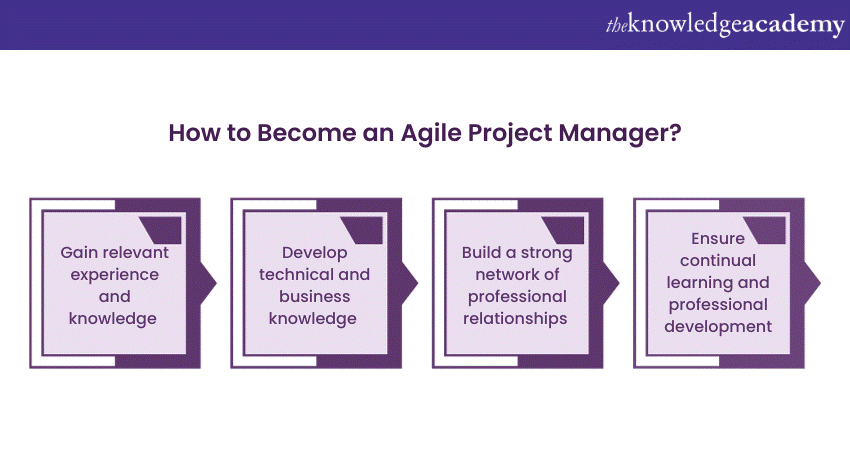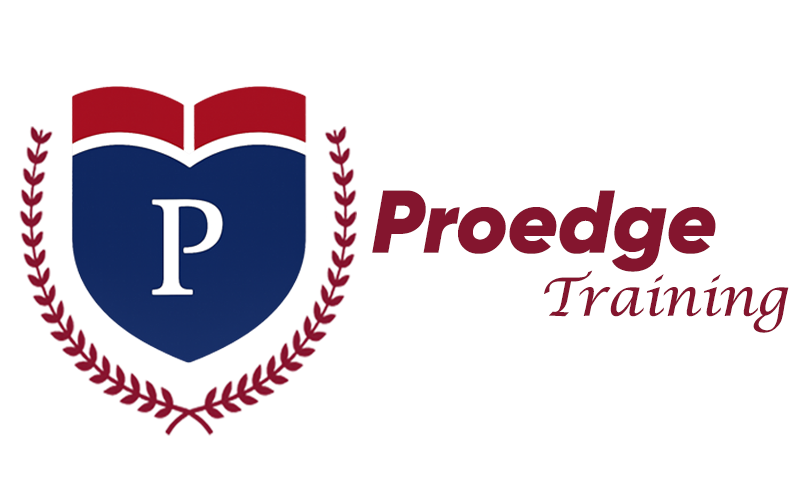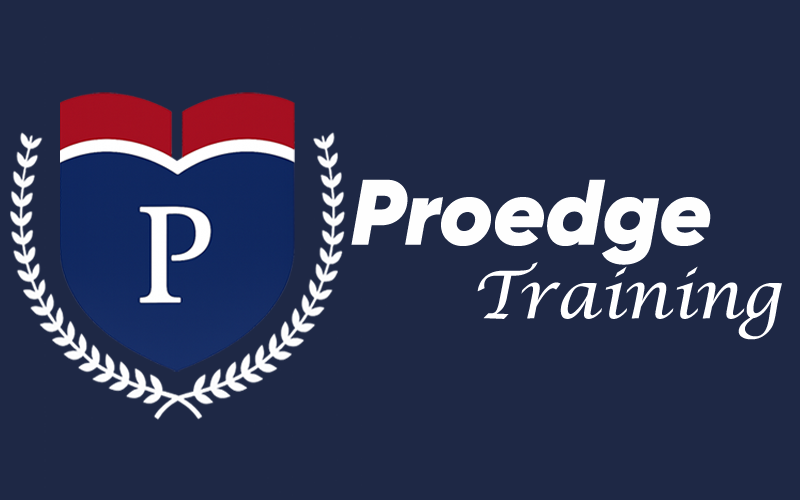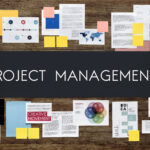
How to Become an Agile Project Management Expert Fast
To become an agile project manager, start by learning agile principles. Gain experience in agile environments, and earn relevant certifications.
Agile project management is a dynamic approach that adapts to changing project needs. It focuses on collaboration and flexibility, making it crucial in today’s fast-paced work environments. As businesses shift towards agile frameworks, the demand for skilled agile managers grows.
They must understand agile methodologies and effectively manage teams. This requires a blend of technical knowledge and interpersonal skills. Whether you’re new to project management or looking to enhance your skills, embracing agile practices can boost your career. Dive into the world of agile, and discover how to lead projects successfully.
Introduction To Agile
Agile project management is a dynamic approach that adapts swiftly to changes. It focuses on delivering value through collaboration and continuous improvement. Agile is not just a methodology; it’s a mindset that empowers teams to work efficiently. It emphasizes flexibility, responsiveness, and stakeholder engagement. Understanding Agile is crucial for anyone aiming to excel in project management. This introduction to Agile will explore its core principles and fundamental concepts.
What Is Agile?
Agile is a project management technique that emphasizes flexibility and speed. It originated in the software industry but is now widely used in various fields. The goal is to deliver products incrementally, ensuring that each iteration adds value. Agile methods, like the Scrum Framework and Kanban System, help teams adapt to changes efficiently. Agile methodology is characterized by:
- Iterative Development: Breaking projects into small, manageable pieces.
- Team Collaboration: Encouraging open communication and teamwork.
- Continuous Improvement: Regularly assessing and enhancing processes.
Agile certifications validate your understanding of these concepts. They provide a structured learning path and ensure you grasp the nuances of Agile principles. Agile is not limited to software development; it applies to any industry where flexibility and rapid response are essential. Here is a simple table to illustrate Agile’s focus:
| Aspect | Traditional | Agile |
|---|---|---|
| Planning | Long-term | Short-term, iterative |
| Feedback | End of project | Continuous |
| Adaptability | Rigid | Flexible |
Core Principles Of Agile
Agile principles guide teams in achieving efficient project delivery. These principles are the foundation of Agile methodology. They focus on collaboration, flexibility, and iterative development. Key principles include:
- Customer Collaboration: Engage stakeholders throughout the project.
- Iterative Development: Deliver work in small increments.
- Team Collaboration: Empower teams to make decisions.
- Continuous Improvement: Regularly review processes for enhancement.
Agile promotes transparency and open communication. It encourages teams to embrace change and respond quickly. The Scrum framework, a popular Agile methodology, uses time-boxed sprints to focus on specific goals. The Kanban system visualizes workflow, ensuring tasks are managed effectively. Agile principles are not rigid rules; they adapt to different project needs. They foster an environment where innovation thrives. Understanding these principles is vital for anyone pursuing Agile certifications. They are the roadmap to successful project management.

Agile Methodologies
Agile methodologies are crucial for effective project management. They offer flexibility and efficiency in dynamic environments. Embracing agile principles enables teams to adapt to changes swiftly and deliver value continuously. Agile project management is not about following rigid processes but about fostering collaboration and iterative development. Understanding these methodologies is essential for those seeking a project management certification. Let’s explore the foundations of Scrum and Kanban, two popular agile frameworks.
Scrum Basics
Scrum is a widely used agile framework. It focuses on iterative development and team collaboration. The Scrum framework is structured around key roles, events, and artifacts:
- Roles: Product Owner, Scrum Master, and Development Team.
- Events: Sprint Planning, Daily Scrum, Sprint Review, and Sprint Retrospective.
- Artifacts: Product Backlog, Sprint Backlog, and Increment.
The Product Owner is responsible for backlog management. This involves prioritizing tasks to ensure the team works on the most valuable items. The Scrum Master facilitates team collaboration and ensures adherence to agile principles. Each sprint is a time-boxed period for completing set tasks. Regular meetings help track progress and encourage continuous improvement. Below is a simple table summarizing Scrum’s key components:
| Component | Description |
|---|---|
| Product Backlog | List of tasks and features. |
| Sprint Backlog | Tasks selected for current sprint. |
| Increment | Completed work at sprint end. |
Kanban Essentials
Kanban is another agile methodology. It focuses on visualizing workflows and improving processes. Unlike Scrum, Kanban does not prescribe roles or sprints. Instead, it uses a Kanban board to manage tasks visually. This helps teams see work status and identify bottlenecks easily. Key elements of the Kanban process include:
- Visual Workflow: Tasks are displayed on a board.
- Work In Progress (WIP) Limits: Restrict the number of tasks in progress.
- Continuous Improvement: Regularly optimize processes.
Kanban boards typically consist of columns representing different stages of the workflow. As tasks progress, they move from one column to the next. This visual representation aids in team collaboration and helps track project status. Kanban promotes adaptability and efficiency. It encourages teams to focus on completing tasks before starting new ones, ensuring quality and timely delivery. Agile tools can further enhance the Kanban process by automating task tracking and analysis.
Key Roles In Agile
Agile project management is a dynamic approach to software development and other projects. It emphasizes flexibility, collaboration, and customer feedback. Key roles in Agile ensure that the process runs smoothly and efficiently. Understanding these roles is crucial for anyone aiming to excel in Agile project management. Two of the most pivotal roles are the Scrum Master and the Product Owner. Each has specific responsibilities that contribute to the success of the Agile methodology.
Scrum Master Responsibilities
The Scrum Master plays a vital role in the Agile environment, ensuring that the team adheres to the Scrum Framework. They act as a facilitator and a coach for the team. Their primary goal is to enable team collaboration and remove any obstacles that might hinder progress.
- Facilitation: The Scrum Master facilitates meetings such as Sprint Planning and daily stand-ups. This ensures the team stays on track.
- Continuous Improvement: They encourage the team to reflect on their work and look for ways to improve. This is a core part of the Agile Principles.
- Shielding the Team: By protecting the team from external interruptions, the Scrum Master allows the team to focus on iterative development.
A Scrum Master also plays a crucial role in stakeholder engagement. They ensure that the team and stakeholders communicate effectively, aligning the project’s goals with business objectives. Continuous learning and obtaining a Project Management Certification can enhance a Scrum Master’s effectiveness.
Product Owner Duties
The Product Owner is responsible for maximizing the value of the product. They have a clear vision of what needs to be built and communicate this to the development team. Their duties are crucial for successful Agile project management.
- Defining User Stories: The Product Owner creates and prioritizes user stories. These guide the development team in building the product.
- Backlog Management: They manage the product backlog, ensuring that the most valuable features are delivered first.
- Stakeholder Engagement: By engaging with stakeholders, the Product Owner ensures the product meets their needs and expectations.
Effective communication is key in the Product Owner role. They must translate business needs into actionable tasks for the team. This requires a deep understanding of the Agile Methodology. A focus on continuous improvement helps the Product Owner adapt to changes in the project scope or goals. Certification in project management can further bolster a Product Owner’s credentials, ensuring that they are equipped to handle complex projects.

Agile Tools And Software
Agile project management is all about flexibility, collaboration, and delivering value quickly. Agile tools and software play a pivotal role in this process. They help teams adapt to changes, enhance stakeholder engagement, and promote team collaboration effectively. With the right tools, managing projects becomes more streamlined, and teams can follow Agile best practices with ease. Whether you’re aiming for project management certification or exploring iterative development, these tools are indispensable in your journey.
Top Agile Tools
Agile tools are designed to support the Scrum framework and Kanban methodologies. They assist in project planning and managing tasks efficiently. Here are some popular tools:
- JIRA: Widely used for issue tracking and project management. Helps in backlog prioritization and sprint planning.
- Trello: A user-friendly tool perfect for visualizing workflows. Ideal for smaller teams and simple projects.
- Asana: Facilitates task assignments, progress tracking, and team collaboration. Offers integration with other software.
- Rally: Designed specifically for Agile teams. Supports iterative development and offers advanced reporting capabilities.
Choosing the right Agile tool depends on your team’s needs. Consider the size of your team, the complexity of projects, and the level of stakeholder engagement required. A table can help compare features:
| Tool | Best For | Key Features |
|---|---|---|
| JIRA | Large teams | Issue tracking, sprint planning |
| Trello | Small teams | Visual boards, task management |
| Asana | General use | Task assignments, integration |
| Rally | Agile teams | Advanced reporting, iterative support |
Choosing The Right Software
Choosing the right software is crucial for effective Agile methodology. It impacts project planning and team collaboration software efficiency. Here are some tips to guide your selection:
- Assess Your Needs: Identify your team’s specific requirements. Consider the level of complexity and the number of projects.
- Evaluate Features: Look for features that support Agile best practices. Prioritize tools with robust stakeholder engagement capabilities.
- Consider Integration: Choose software that integrates well with existing systems. This enhances team collaboration and streamlines workflows.
- Check Scalability: Ensure the software can grow with your team. Scalable options support future expansion and iterative development.
Software should align with your team’s goals and workflows. Whether you’re working with Kanban boards or the Scrum framework, the right software enhances productivity. It fosters a culture of continuous improvement and helps achieve project management certification goals.
Agile Planning Techniques
Agile planning techniques are crucial for anyone pursuing a career in agile project management. These techniques help teams stay on track, adapt to changes, and deliver value consistently. With agile methodologies, like Scrum and Kanban, planning becomes a continuous process rather than a one-time event. Let’s dive into some essential agile planning techniques.
Sprint Planning
Sprint planning is a vital part of the Scrum framework. It sets the stage for what the team aims to achieve in the upcoming sprint. This meeting includes the entire team and focuses on creating a clear plan.
- Define the Sprint Goal: The team agrees on a specific, achievable goal.
- Team Collaboration: Encourages input from all team members.
- Estimate Tasks: Tasks are broken down and estimated for effort.
- User Stories: Prioritize user stories that align with the sprint goal.
Effective sprint planning relies on continuous improvement. It involves reflecting on previous sprints during the sprint review. This helps teams refine their processes. The focus is not just on quantity but quality. Teams aim to deliver the most value possible. By iteratively planning, they adapt quickly to changes.
| Component | Description |
|---|---|
| Sprint Goal | A shared objective for the sprint. |
| User Stories | Tasks aligned with the goal. |
| Task Estimation | Effort evaluation for each task. |
| Team Collaboration | Collective input from all members. |
Backlog Management
Backlog management is crucial for agile methodology. It involves organizing and prioritizing the project backlog. The backlog is a dynamic list of tasks and features. Effective backlog management ensures stakeholder engagement. It helps in aligning the project with business goals. Here are some key aspects:
- Prioritization: Order items based on value and urgency.
- Continuous Refinement: Regular updates to keep the backlog relevant.
- Stakeholder Engagement: Involvement of stakeholders in setting priorities.
- Clear User Stories: Detailed and understandable user stories for the team.
Backlog management requires iterative development and regular review sessions. Using a Kanban board can aid in visualizing the backlog. This helps teams focus on current tasks without losing sight of future requirements. With project management certification, professionals can master these techniques. They learn to maintain a balance between planned work and unforeseen changes. By keeping the backlog clean and organized, teams can maintain momentum. This approach supports continuous improvement and keeps the project moving forward.
Team Collaboration In Agile
Agile project management thrives on strong team collaboration. It emphasizes flexibility, adaptability, and constant communication to ensure successful project delivery. Within the Scrum framework, team collaboration is a cornerstone for achieving collective goals. Agile teams often engage in regular meetings to foster transparency and alignment. These meetings help everyone stay informed and contribute effectively. By focusing on collaboration, teams can enhance their project management skills and drive continuous improvement.
Daily Stand-ups
Daily stand-ups are a crucial part of Agile methodology. They are short meetings where team members share updates, discuss tasks, and identify obstacles. These meetings usually last 15 minutes, keeping the focus sharp and efficient. Stand-ups help teams stay aligned during sprint planning and execution. They ensure everyone is on the same page and aware of current priorities. During a stand-up, each team member answers three questions:
- What did I accomplish yesterday?
- What will I work on today?
- Are there any obstacles in my way?
These questions promote transparency and accountability. They enable quick decision-making and problem-solving. A Kanban board can be an effective tool to visualize tasks and track progress. It provides a clear view of what is happening within the team. This helps in improving stakeholder engagement and communication. Stand-ups foster a culture of continuous improvement. They encourage teams to adapt and respond to changes swiftly. This practice enhances overall team collaboration and ensures successful project delivery.
Retrospectives
Retrospectives are vital for reflecting on sprint planning and execution. These meetings occur at the end of each sprint. They offer a platform for the team to discuss what went well and what needs improvement. The goal is to refine processes and drive continuous improvement. During a retrospective, teams typically examine:
- What went well during the sprint?
- What could be improved?
- What actions will we take next?
These questions enable a constructive discussion on past performance. Retrospectives help teams identify patterns and areas for enhancement. By addressing these, teams can improve their Agile tools and project management skills. A retrospective can include a table to summarize findings:
| Aspect | Feedback | Action |
|---|---|---|
| Communication | Needs more clarity | Use clearer language in updates |
| Task Management | Effective | Continue using Kanban board |
By focusing on these aspects, teams can enhance stakeholder engagement and project outcomes. Retrospectives are an essential part of maintaining strong team collaboration in Agile project management.
Challenges In Agile
Agile Project Management is a dynamic approach that focuses on flexibility and iterative development. Adopting Agile can be challenging. Teams often face hurdles like adapting to new processes and embracing a continuous improvement mindset. Performance metrics can shift, requiring teams to rethink their strategies. Understanding these challenges is crucial to successfully implementing Agile methodology.
Common Pitfalls
Implementing Agile methodology can be fraught with common pitfalls. One frequent issue is a lack of clear understanding of Agile principles. Teams might struggle with the Scrum Framework due to inadequate training or absence of Project Management Certification. These gaps can lead to misalignment and ineffective project delivery. Another pitfall is poor stakeholder engagement. If stakeholders are not involved early, misunderstandings can derail progress. Agile relies heavily on team collaboration. Without a cohesive team, the iterative development process may falter. Performance metrics are vital in Agile. Yet, teams often rely on outdated metrics unsuitable for Agile environments. This can skew project results and hinder continuous improvement.
| Common Pitfalls | Solutions |
|---|---|
| Misunderstanding Agile principles | Invest in Project Management Certification |
| Poor stakeholder engagement | Enhance communication strategies |
| Outdated performance metrics | Adopt Agile-specific metrics |
Overcoming Resistance
Resistance to change is a natural part of Agile adoption. The first step in overcoming resistance is effective change management. Clearly communicate the benefits of Agile methodology to all team members and stakeholders. Engaging stakeholders is crucial. Regular updates and involving them in the iterative development process can reduce resistance. Team collaboration should be emphasized. Encourage open discussions and feedback to foster a supportive environment. Continuous improvement should be ingrained in the team’s culture. Highlight how Agile promotes better project delivery and performance metrics. Remind the team of the value in adapting and learning.
- Communicate effectively using change management strategies.
- Involve stakeholders in the process.
- Create an open environment for team collaboration.
- Focus on continuous improvement and adapting to new methodologies.
Certifications And Training
Agile Project Management has transformed how teams work. To excel in this dynamic field, gaining the right Certifications and Training is crucial. Certifications validate your skills and enhance credibility. Training provides the practical knowledge needed to implement Agile frameworks effectively. Whether you’re interested in Lean Project Management or mastering Agile Tools, a structured learning path can pave the way to success.
Popular Certifications
Several certifications stand out for aspiring Agile Project Managers. These certifications are widely recognized and respected in the industry:
- Certified Scrum Master (CSM): Focuses on Scrum principles and practices. Ideal for those wanting to lead Scrum teams.
- Project Management Professional (PMP): Offers a comprehensive understanding of project management. Includes Agile and traditional methods.
- Agile Certified Practitioner (PMI-ACP): Covers Agile Methodology, including Scrum, Kanban, and Lean Project Management.
- Lean Six Sigma: Combines Lean and Six Sigma principles. Enhances process improvement skills.
Below is a comparison table for these certifications:
| Certification | Focus Area | Prerequisites |
|---|---|---|
| CSM | Scrum Master | None |
| PMP | Project Management | Experience and Education |
| PMI-ACP | Agile Frameworks | Experience in Agile |
| Lean Six Sigma | Process Improvement | None |
Training Resources
Finding the right Project Management Training is essential for skill development. Numerous resources can guide your learning:
- Online Courses: Platforms like Coursera and Udemy offer courses on Agile Methodology, Kanban Principles, and more.
- Books: “Agile Project Management for Dummies” provides an easy-to-understand guide.
- Workshops: Many organizations offer workshops on Agile Coaching and Project Planning Techniques.
- Webinars: Free webinars hosted by industry experts often cover the latest Agile Tools and practices.
Consider the following sources for comprehensive training:
| Resource Type | Benefits |
|---|---|
| Online Courses | Flexible, wide range of topics |
| Books | Detailed information, self-paced |
| Workshops | Interactive, hands-on learning |
| Webinars | Current trends, expert insights |
These resources make it easier to grasp Agile Frameworks and prepare for certification exams. Choose one that suits your learning style.

Frequently Asked Questions
Which Is Better, Pmp Or Agile?
PMP suits structured projects with defined scope, while Agile excels in adaptable, iterative environments. Choose based on project needs.
How Do I Start An Agile Career?
Begin by learning Agile principles and methodologies. Gain certifications like Certified ScrumMaster (CSM) or PMI-ACP. Attend Agile workshops and networking events. Build experience through internships or entry-level roles in Agile teams. Continuously improve by staying updated with Agile trends and practices.
How Long Does It Take To Learn Agile Project Management?
Learning agile project management typically takes 2-6 weeks with focused study. Duration depends on prior experience and learning resources. Practical application and continuous learning enhance proficiency. Online courses and workshops can expedite the process. Stay engaged with agile communities for ongoing support and growth.
What Is The Salary Of Agile Project Management?
Agile project management salaries vary by location, experience, and company size. Typically, they range from $80,000 to $140,000 annually in the United States. Senior roles may earn more. Regularly updating skills and certifications can enhance earning potential.
Conclusion
Embarking on the journey of agile project management can transform your workflow. Start small. Implement agile principles gradually to see positive results. Remember, flexibility is key to success. Agile methods encourage collaboration, helping teams work efficiently. Stay open to changes and learn from experiences.
This approach fosters a dynamic work environment. Keep communication clear and consistent to ensure everyone stays on track. Agile practices enhance productivity and adapt to evolving project needs. With time, your team will embrace the agile mindset. You’ll see improved project outcomes and satisfaction.
Prioritize learning, and let agile guide your project management path.





